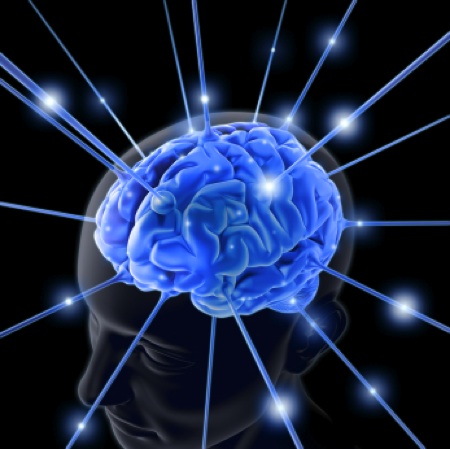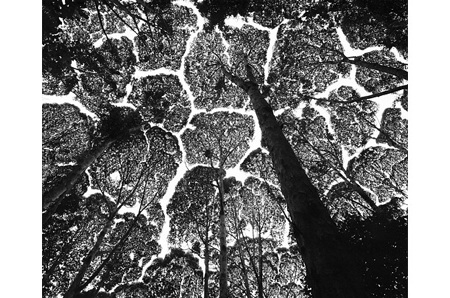What Comes After Minds?
[Translations: Japanese]
The human mind is the most complex thing we know. We feel this intuitively. But complexity is hard to measure. The total number of cells in a human brain may be no more than those in a watermelon, yet the diversity and functions of those cells in the brain exceed those in a fruit.

We can count up the number of parts, links, subparts, logical depth, and degrees of freedom of various complicated entities (a jumbo jet, rainforest, a star fish) and the final tally of components may near the total for a brain. Yet the function and results of those parts are way more complicated than the sum of the parts. When we begin to consider the multiple processes each part participates in, the complexity of the mind becomes more evident. Considered in the light of their behavior, living things outrank the inert in complexity, and smart things outrank dumb ones. We also have evidence for this claim in our efforts to manufacture complexity. Making a stone hammer is pretty easy. Making a horseless carriage more difficult. Making a synthetic organism more so. A human mind is yet more difficult to synthesize or recreate. We have not come close to achieving an artificial mind and some believe the complexity of the mind is so great that we will forever fail in that quest. Because of this difficulty and uncertainty, the mind is currently the paragon of complexity in creation.
If anything might rival the mind’s ultimate complexity, it would be the planetary biosphere. In its sheer mass and scale, the tangle of zillions of organisms and vast ecosystems in the biosphere trumps the 5 kilos of neurons and synapses in the brain – by miles. Yet we tend to assign greater complexity to the mind for two reasons. One, we think we understand how ecosystems work, although we can’t yet predict how they all work together. We have not conquered its planetary scale. On the other hand, we are baffled how the human mind works even in small regions. Scale is just one problem. Our mind parts are much more deeply entangled, reflective, recursive, and woven together into a unified whole than the biosphere. As a whole, the mind is a mystery still.
Two, the output of the biosphere is primarily more of itself. It will self-regulate and slowly evolve new species, but it has not produced new types of creation – except of course it produced human minds. But human minds have created all these other things, including miniature ecosystems and tiny biospheres, so we assign greater complexity to it.
This point was better said, more succinctly, by Emily Dickinson in her grenade of a poem.
The brain is wider than the sky,
For, put them side by side,
The one the other will contain,
With ease, and you, beside.
The asymmetry of compression is an important metric. The fact that the brain can contain an abstract of the biosphere, but the biosphere not contain an abstract of a human mind, suggests one is larger, or more complex, than the other.
While we have not yet made anything as complex as a human mind, we are trying to. The question is, what would be more complex than a human mind? What would we make if we could? What would such a thing do? In the story of technological evolution – or even biological evolution – what comes after minds?
The usual response to “what comes after a human mind” is better, faster, bigger minds. The same thing only more. That is probably true – we might be able to make or evolve bigger faster minds — but as pictured they are still minds.
A more recent response, one that I have been championing, is that what comes after minds may be a biosphere of minds, an ecological network of many minds and many types of minds – sort of like rainforest of minds – that would have its own meta-level behavior and consequences. Just as a biological rainforest processes nutrients, energy, and diversity, this system of intelligences would process problems, memories, anticipations, data and knowledge. This rainforest of minds would contain all the human minds connected to it, as well as various artificial intelligences, as well as billions of semi-smart things linked up into a sprawling ecosystem of intelligences. Vegetable intelligences, insect intelligences, primate intelligences and human intelligences and maybe superhuman intelligences, all interacting in one seething network. As in any ecosystem, different agents have different capabilities and different roles. Some would cooperate, some would compete. The whole complex would be a dynamic beast, constantly in flux.

We could imagine the makeup of a rainforest of minds, but what would it do? Having thoughts, solving problems is what minds do. What does an ecosystem of minds do that an individual mind does not?
And what comes after it, if a biome of intelligences is next? If we let our imaginations construct the most complex entity possible, what does it do? I have found we either imagine it as a omniscient mind, or as a lesser god (almost the same thing). In a certain sense we can’t get beyond the paragon of a mind.
Cultures run on metaphors. The human mind is the current benchmark metaphor for our scientific society. Once upon a time we saw nature as an animal, then it was a clock, now we see it as a kind of mind. A mind is the metaphor for ultimate mystery, ultimate awe. It represents the standard for our attempts at creation. It is the metric for complexity. It is also our prison because we can’t see beyond it. This is the message of the Singularitans: we are incapable of imagining what comes after a human mind.
I don’t believe that, but I don’t know what the answer is either. I think it is too early in our technological development to have reached a limit of complexity. Surely in the next 100 or 500 years we’ll construct entities many thousands of times more complex than a human mind. As these ascend in prominence they will become the new metaphor.
Often the metaphor precedes the reality. We build what we can imagine. Can we imagine – now – what comes after minds?


